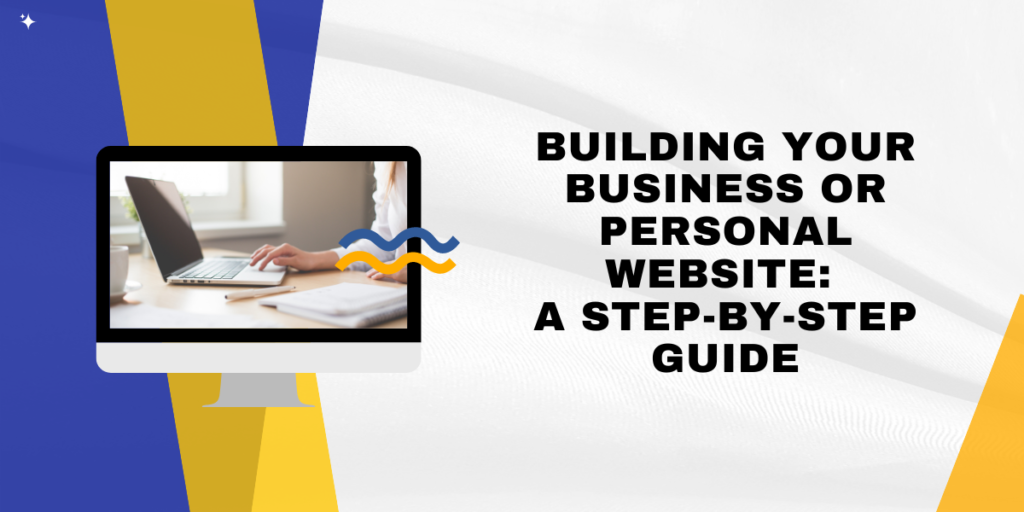How to create a website for your business or personal use
In the current digital era, having a website is crucial for both individuals and businesses. A website not only gives you an online presence, but it also connects you with new clients, lets you advertise your goods and services, and lets you spread your ideas throughout the globe. Here is a step-by-step tutorial to assist you in getting started whether you want to build a website for your business or personal usage.

Establish the goals and purpose of your website.
It’s essential to decide on the function and objectives of your website before beginning the website design process. Are you building an online store to sell goods? Or maybe a website where you may display your work as a portfolio? Throughout the development process, it will be easier to make judgements if you are aware of the goals of your website.
Select your domain name and web host.
Choosing a domain name, or the web address people will use to reach your website (such as www.yourbusinessname.com), is the following step. Choose a memorable domain name that accurately describes your company or personal brand. Once you’ve decided on a domain name, you’ll need to locate a reputable web host to store the files for your website and make it accessible online.
Choosing a content management system
A content management system (CMS) is a software platform that enables you to develop and maintain the content of your website without having to have a deep understanding of coding. WordPress is one of the most well-liked CMS alternatives since it is user-friendly and provides a large selection of programmable themes and plugins. Alternatively, depending on your unique demands, you might look at different CMS options like Joomla or Drupal.
Personalize the layout and design
It’s time to customize your website’s style and layout after you’ve set up your CMS. Pick a theme or template that complements your brand or sense of style, then make changes to it to fit your tastes. To make your website aesthetically pleasing and simple to navigate, you can alter the colors, fonts, add a logo, and create a navigation menu.
Produce interesting and pertinent content
Any effective website is built on compelling content. Create relevant, high-quality material that appeals to your target market. Focus on delivering value and demonstrating your subject matter expertise in all of your content, whether it’s interesting blog entries, eye-catching pictures, or interesting videos. Adding pertinent keywords to your content can help you optimize it for search engines and raise the visibility of your website in search results.
Include necessary pages and features.
There should be key pages on your website that provide users with crucial information. The home page, about page, products/services page, contact page, and any more pertinent pages relevant to your business or personal objectives are among them. To improve user experience and engagement, also think about including features like a search bar, social network integration, client testimonials, and a blog.
Adapt to Mobile Devices
Making ensuring your website is mobile-friendly is essential in a world when smartphone usage is on the rise. Your website’s style and content will automatically adapt to different screen sizes if it has a responsive design, giving users a consistent experience on computers, tablets, and mobile devices. To make sure your website works effectively on mobile, test it across a range of devices and utilize tools like Google’s Mobile-Friendly Test.
Put SEO Strategies to Use
SEO is essential for increasing your website’s visibility and generating organic traffic. By adding pertinent keywords, producing enlightening meta descriptions, coming up with clever URLs, and optimizing photos, you may improve your website. In order to boost the authority of your website, concentrate on creating high-quality content that addresses popular questions about your sector.
Launch and Test Your Website
Test your website’s performance and functionality in-depth before launching it. Verify that all pages are functional by looking for broken links, testing forms, and interactive features.




